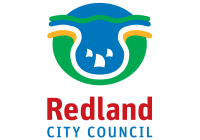Self-sufficiency measures the proportion of local workers in the local area who also live in the Local Government Area or region. It indicates the level at which the resident workers meet the labour requirements of the local industries or businesses.
Self-sufficiency is likely to be higher for regional areas, lower in metropolitan areas and is influenced by:
- The nature of employment opportunities versus the skills and qualifications of residents;
- Transport options available and commuting times;
- Relationship between wages and salaries and house prices in the area; and
- The geographic size of the area.
Employment self-sufficiency data should be viewed in conjunction with detailed Workers place of residence data to see how far workers are travelling to access employment in the area, as well as Worker productivity and Local workers income and Local workers hours worked data to look at the value of local workers contributions. The Resident workers section will provide the characteristics of resident workers.
Data source
Australian Bureau of Statistics (ABS) – Census 2016 & 2021 – by place of work
- Industry
- Occupations
| Employment self-sufficiency by Industry | |||||||||
|---|---|---|---|---|---|---|---|---|---|
| Redland City Council | 2021 | 2016 | Change | ||||||
| Industry | Total local workers | Local workers living in the region | % of local workers living in the region | Total local workers | Local workers living in the region | % of local workers living in the region | 2016 - 2021 | ||
| Agriculture, Forestry and Fishing | 459 | 316 | 68.8 | 477 | 368 | 77.1 | -8.3% | ||
| Mining | 184 | 141 | 76.6 | 253 | 197 | 77.9 | -1.2% | ||
| Manufacturing | 2,710 | 1,587 | 58.6 | 2,689 | 1,737 | 64.6 | -6.0% | ||
| Electricity, Gas, Water and Waste Services | 417 | 272 | 65.2 | 349 | 242 | 69.3 | -4.1% | ||
| Construction | 4,499 | 3,148 | 70.0 | 3,931 | 2,681 | 68.2 | +1.8% | ||
| Wholesale Trade | 752 | 539 | 71.7 | 849 | 606 | 71.4 | +0.3% | ||
| Retail Trade | 5,777 | 4,375 | 75.7 | 5,519 | 4,261 | 77.2 | -1.5% | ||
| Accommodation and Food Services | 3,809 | 3,103 | 81.5 | 3,404 | 2,811 | 82.6 | -1.1% | ||
| Transport, Postal and Warehousing | 1,203 | 906 | 75.3 | 1,121 | 876 | 78.1 | -2.8% | ||
| Information Media and Telecommunications | 314 | 236 | 75.2 | 402 | 296 | 73.6 | +1.5% | ||
| Financial and Insurance Services | 689 | 560 | 81.3 | 686 | 563 | 82.1 | -0.8% | ||
| Rental, Hiring and Real Estate Services | 886 | 736 | 83.1 | 902 | 744 | 82.5 | +0.6% | ||
| Professional, Scientific and Technical Services | 2,205 | 1,760 | 79.8 | 2,085 | 1,672 | 80.2 | -0.4% | ||
| Administrative and Support Services | 1,503 | 1,124 | 74.8 | 1,475 | 1,136 | 77.0 | -2.2% | ||
| Public Administration and Safety | 1,898 | 1,351 | 71.2 | 1,715 | 1,203 | 70.1 | +1.0% | ||
| Education and Training | 4,539 | 3,344 | 73.7 | 4,001 | 2,926 | 73.1 | +0.5% | ||
| Health Care and Social Assistance | 8,409 | 5,526 | 65.7 | 6,234 | 4,444 | 71.3 | -5.6% | ||
| Arts and Recreation Services | 510 | 401 | 78.6 | 527 | 439 | 83.3 | -4.7% | ||
| Other Services | 2,122 | 1,668 | 78.6 | 1,913 | 1,480 | 77.4 | +1.2% | ||
| Industry not classified | 1,889 | 1,386 | 73.4 | 1,869 | 1,395 | 74.6 | -1.3% | ||
| Total Industries | 44,999 | 32,487 | 72.2 | 40,532 | 30,076 | 74.2 | -2.0% | ||
Source: Australian Bureau of Statistics, Census of Population and Housing 2016 and 2021 Compiled and presented in economy.id by .id (informed decisions). Please refer to specific data notes for more information | |||||||||


